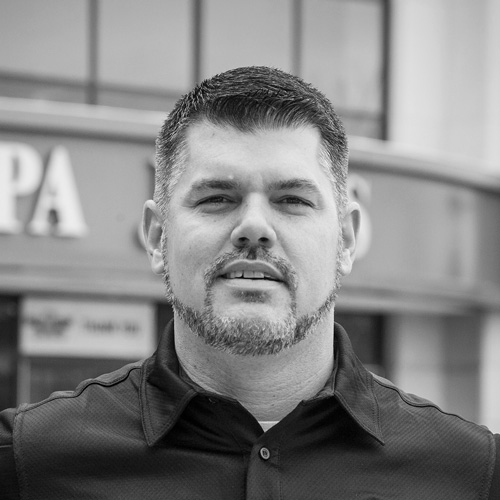ON Semiconductor has been going through some changes. The Phoenix-based semiconductor giant has, in the past few years, doubled in size through a series of acquisitions, most notably acquiring Fairchild Semiconductor International for $2.4 billion in September 2016. Today, the company sports about 30,000 employees and 60,000 products.
During this transitional period, Rob Tuttle has served as the company’s chief intellectual property (IP) counsel and is primarily responsible for IP litigation management, patent portfolio development, and transactional support work. An invaluable asset during these acquisitions has been the target companies’ IP portfolios, and Tuttle has been the perfect person to advise on such matters. With a degree in electronic engineering and a JD, he knows both the science and the legal aspects of these portfolios. Now, he reflects upon ON Semiconductor’s period of aggressive growth and the essentials of what makes a good deal.
ON Semiconductor has made many major acquisitions in its eighteen years in business. What role did you play in them?
I’ve been with the company, as an attorney, for five years. I started at ON Semiconductor right after the company completed a deal to buy SANYO Semiconductor for approximately $600 million—a deal that came with thousands of patents. Since that time, I have advised ON with respect to all aspects of IP in several large acquisitions: Truesense Imaging, Aptina Imaging, and Fairchild Semiconductor. These deals doubled the size of ON and added thousands of patents to ON’s portfolio.
What sorts of deals are these?
Each of these deals advances specific corporate objectives to enter certain end-markets. For example, the Truesense and Aptina deals in 2014 were focused on entering the image sensor space in the industrial and automotive markets, whereas the Fairchild acquisition supported ON’s goal to become the premier supplier of power management and analog semiconductor solutions. Prior to being an attorney, I was a semiconductor designer for the predecessor of ON, Motorola, and this expertise helps me to understand the deal from both a technical and legal perspective. IP is usually a major part of any deal that ON does, so deals in our space often require a healthy balance of being able to speak nerd and speak legalese. That is my team’s specialty.
“It requires a lot of collaboration and creative thinking on the sides of both parties—thinking through what you can give on in order to accomplish what the other party is interested in and also get what you need out of the deal.”
Based on this experience, how do you think a good deal starts?
In a theoretical, perfect world, you would learn every last detail about the target company or IP portfolio you’re buying before you even approach the target. But you very rarely get the opportunity to vet a target for long enough to learn every last detail. Instead, you hire competent outside lawyers to help bridge knowledge gaps, and you then advise the client about perceived gaps in your knowledge that might still exist. Notably, though, there is business advantage in closing those gaps as fast as possible. So, the better deals tend to start with a better than average understanding of the target because knowledge gaps and possible risks associated with those gaps are easier to close.
Why do these deals need to move so quickly?
They move quickly for various reasons. Sometimes the acquiring company has an influx of cash, and other times there’s a unique business opportunity that did not present itself previously. Still, other times, there are multiple potential acquirers chasing the same deal. Regardless, these opportunities happen very quickly, and you have to move quickly on those deals because the money or unique business opportunity doesn’t stay around forever, and you have to strike while the iron’s hot.
How does a bad deal begin?
Bad deals tend to start with one or both parties involved in the deal not fully appreciating what they want or expect before the deal begins. This can include technical, financial, or even cultural differences between target and acquirer. That said, if the parties are as educated about the deal as they can be beforehand, understand their expectations beforehand, and exchange information as openly as possible during diligence, that usually creates more successful outcomes and deals that close rather than fall apart.
How can an M&A deal be turned around, if this begins to happen?
In my opinion, the best way is for the parties to really try to understand what is motivating the other side and see if there is flexibility to be had. Let’s say there’s an issue about the timing of the deal close where the acquirer would like the deal to close fast. That could be a problem from a financing or government-approvals perspective. But if you can find out what’s really driving the concern and communicate it, you can usually structure some sort of compromise because both parties are trying to work toward the same goal of closing the deal. You have to be creative to structure these fixes.
Back to the above example, let’s say the acquirer is most concerned about timing because they want to capitalize on a window of opportunity for some of the products of the target business and the target is more concerned about price but flexible on timing and exact deal structure. Then, the acquirer may pay license fees to the target while the deal is pending in order to begin making licensed products and still take advantage of that window of opportunity. It requires a lot of collaboration and creative thinking on the sides of both parties—thinking through what you can give on in order to accomplish what the other party is interested in and also get what you need out of the deal. We had a recent deal where we used collaborative tactics like this and were able to save a deal that was sinking.
What is coming up next for ON Semiconductor’s IP department?
We just doubled the size of the company, added thousands of new patents to the portfolio, and now have IP team members in Korea and Taiwan, so we’ve got a lot of digesting to do. I joke with my team that it is like the boa constrictor swallowing the rabbit. The great news is that these changes uniquely position us as an IP department in serving the needs of a top semiconductor supplier, so if a great market opportunity presents itself, we will be game.

